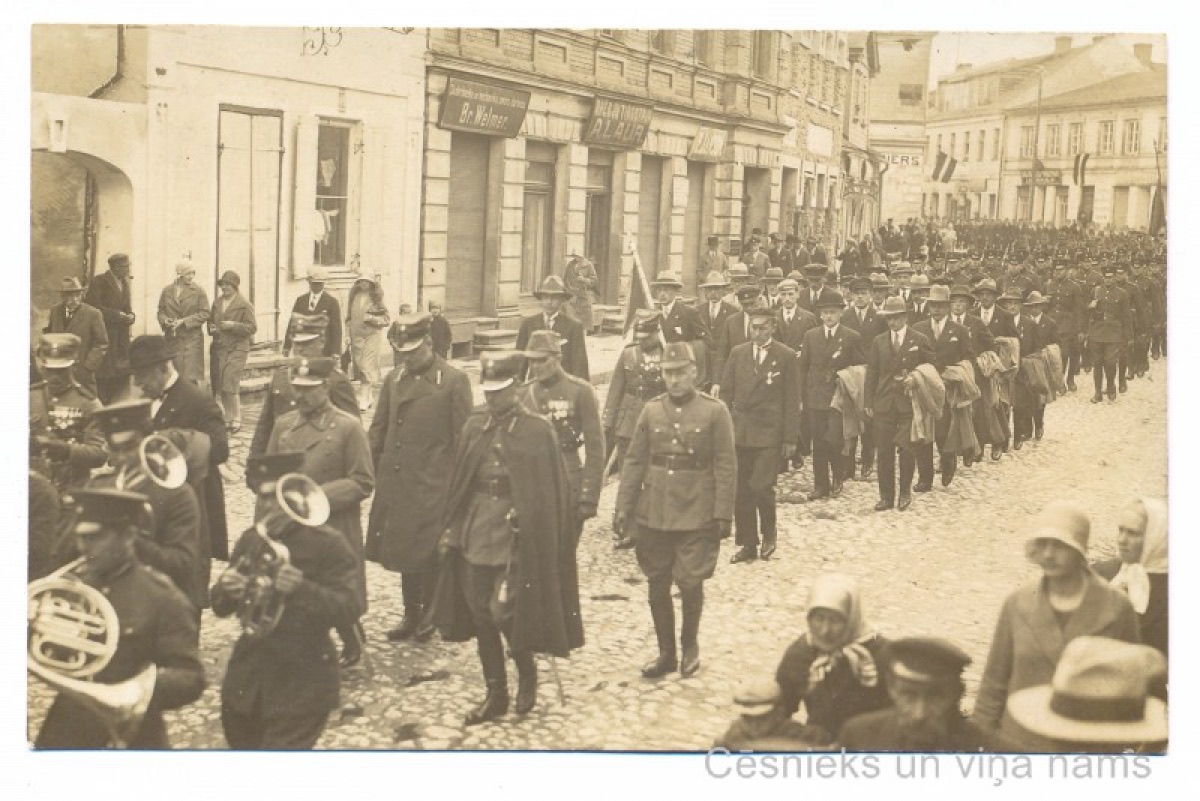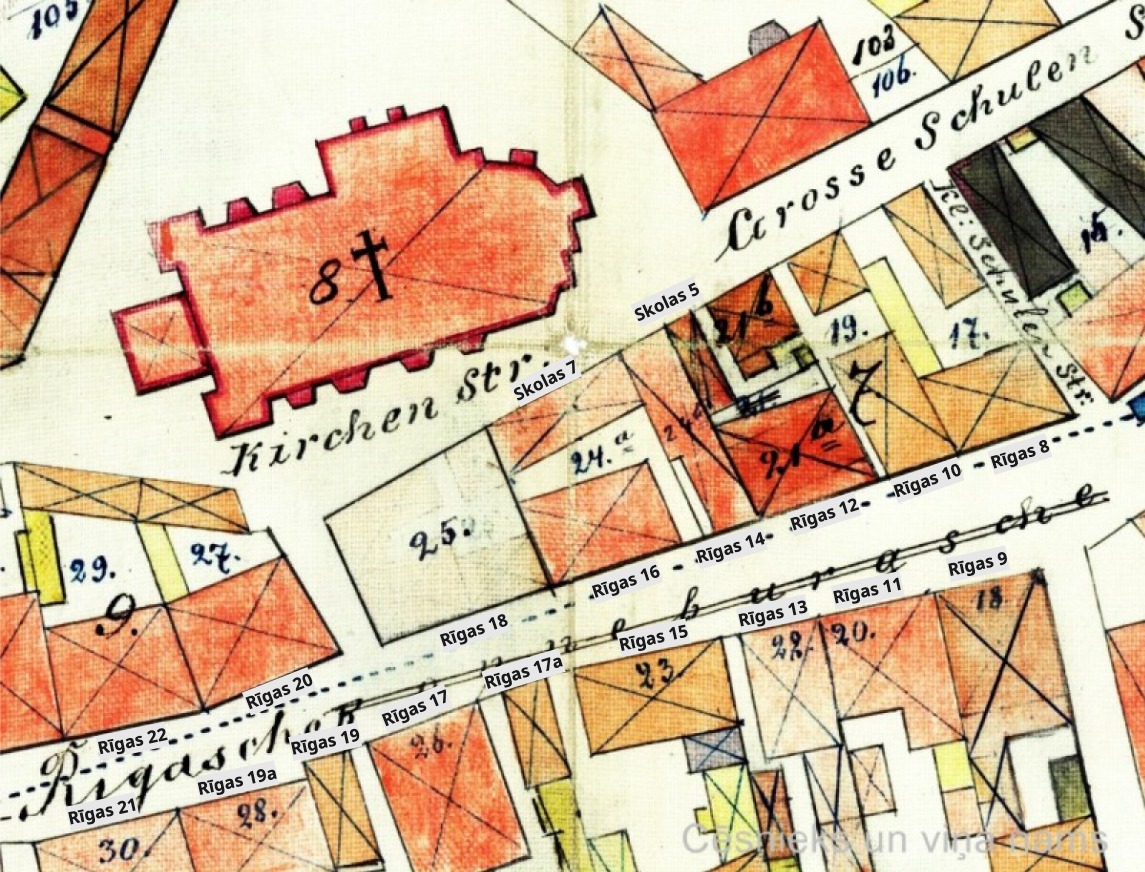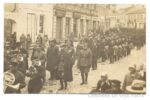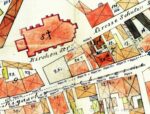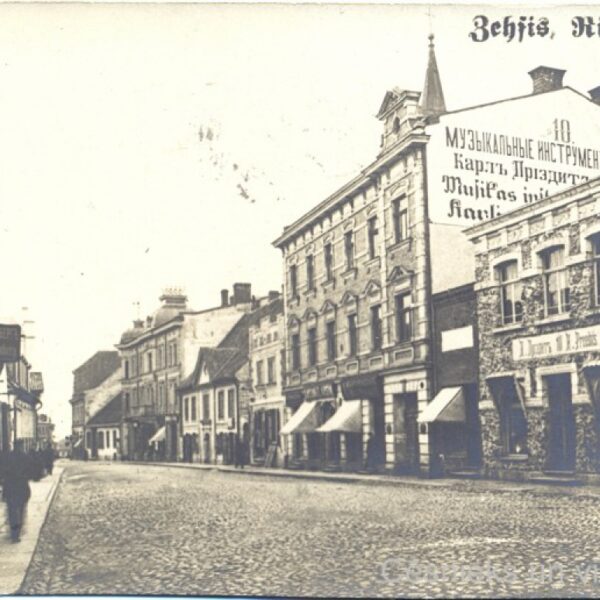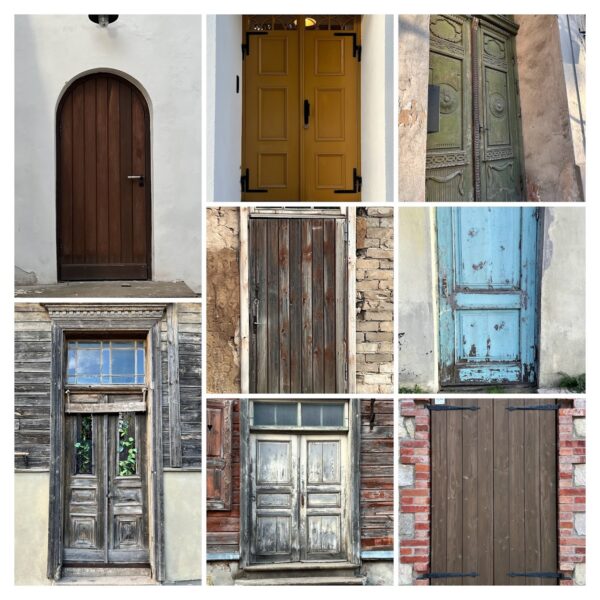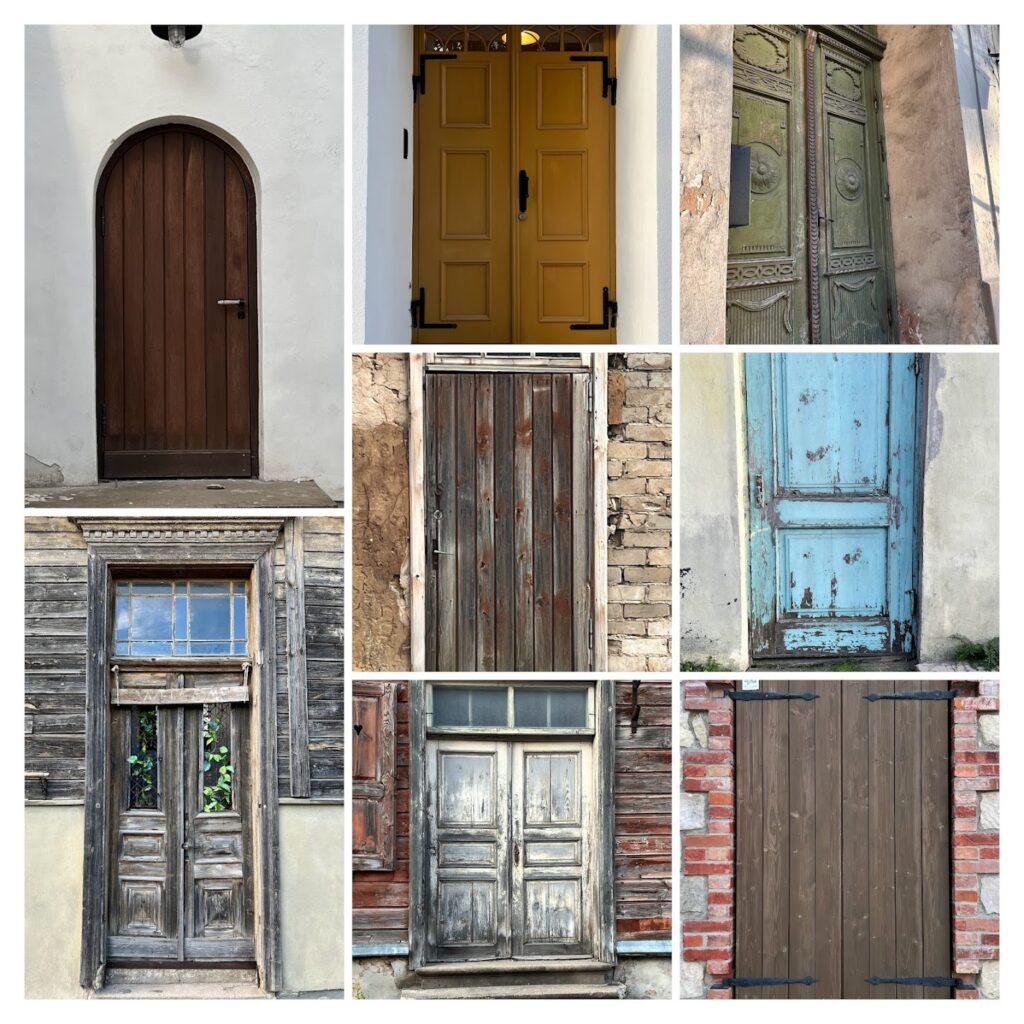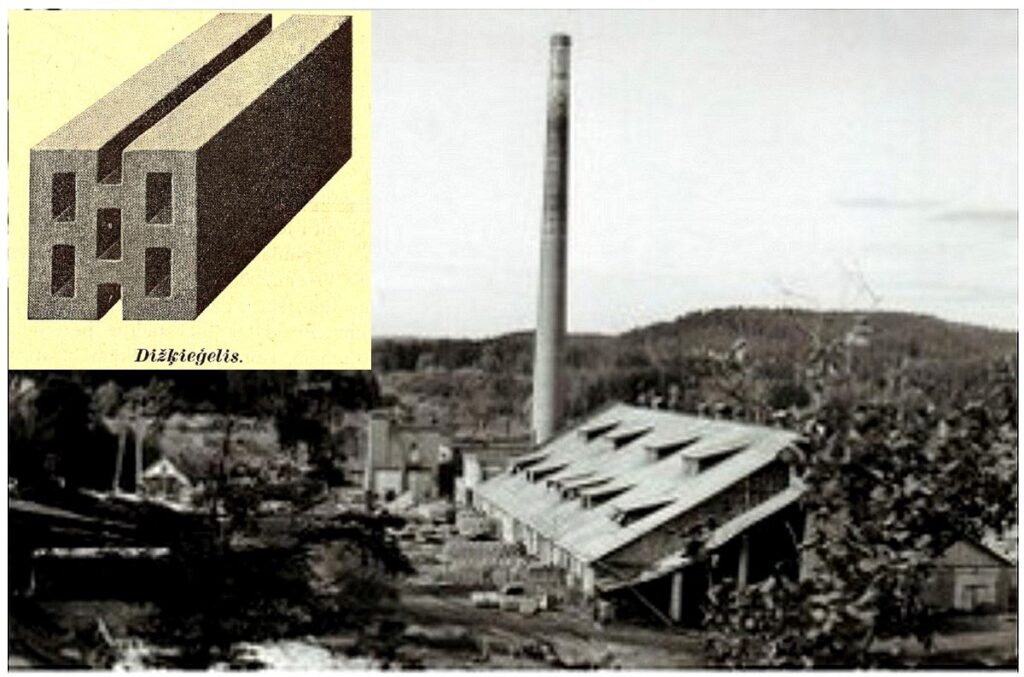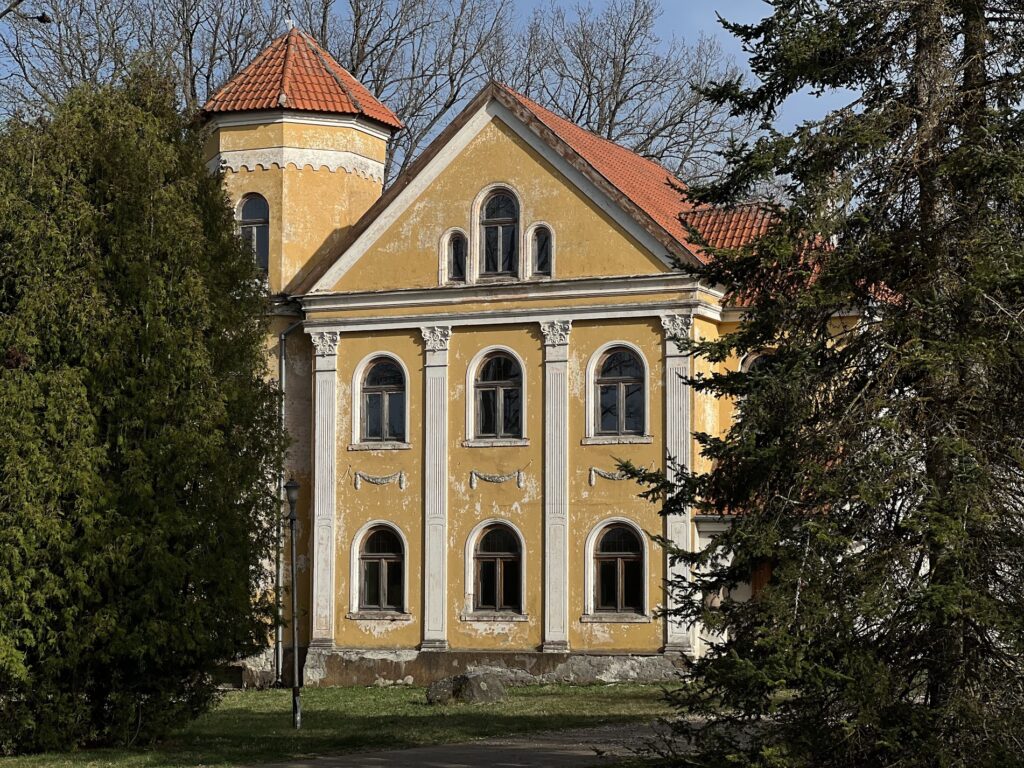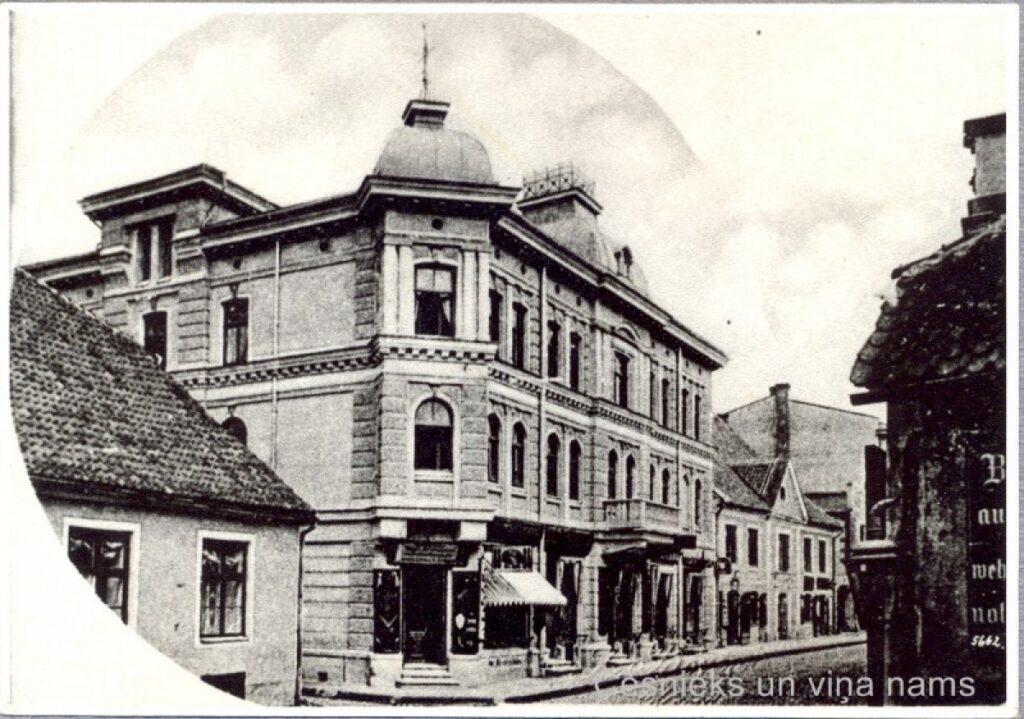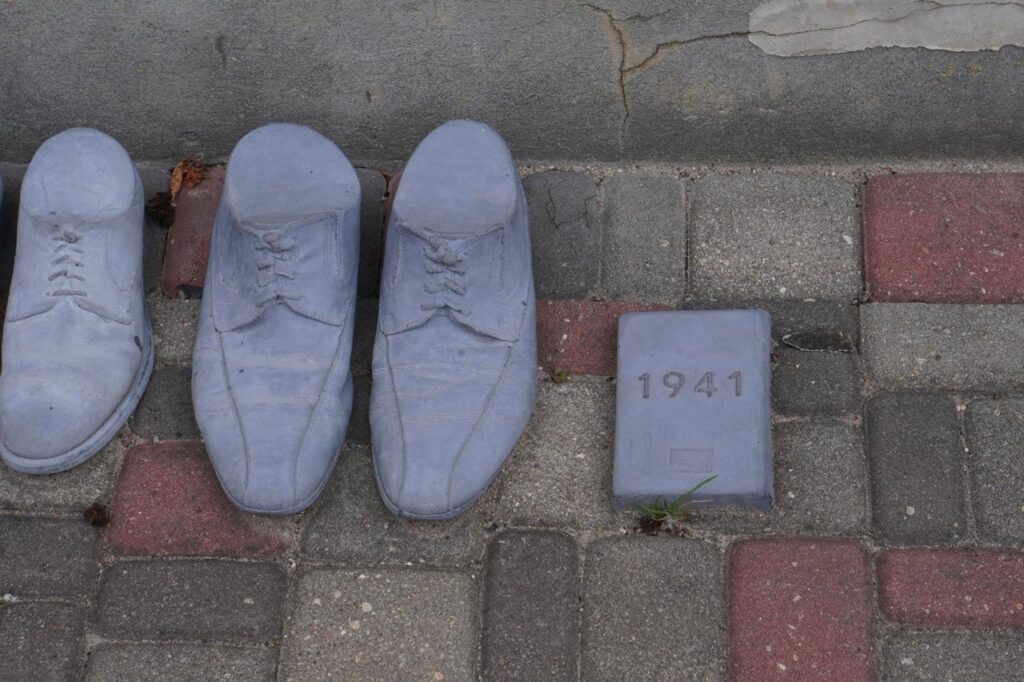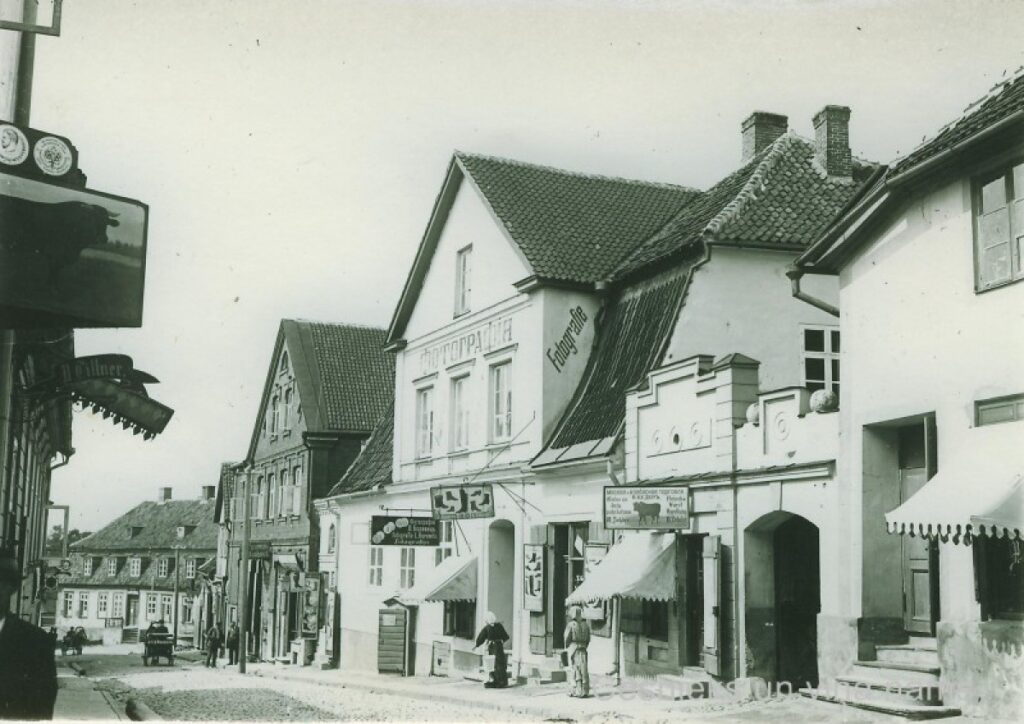In the center of Cēsis, where nowadays a green lawn and comfortable bench stretch opposite the “Pearl of Cēsis” sculpture, there once stood a small building with the address 14 Riga Street. The narrow plot and small structure still stood out in the Riga Street landscape in the thirties, contrasting with the more substantial neighboring properties.
The property’s history begins in the mid-17th century – archive materials show that Jesuit Olaj’s house was located here, which belonged to Vite, while the land belonged to the deceased pastor Meijer’s heirs. In the mid-18th century, the plot was added to the adjacent property, now known as 16 Riga Street, and was marked on maps as No. 24.
On January 10, 1868, locksmith master Friedrich Boltzmann purchased the house at 14 Riga Street from the Kolmann family for 1500 rubles. 1879. In maps from 1879 (survey year) / 1895 (map publication year), two separate properties are already visible – 24a and 24b – indicating further development. During this time, Boltzmann expanded his properties by also purchasing part of plot No. 21 (now 5 L. School Street), where two buildings were located.
Friedrich Boltzmann’s life story reflects the fragility of the era – in 1902, he lost his wife Ernestine, who died of pneumonia at age 57. That same year, in autumn, Friedrich also passed away, reaching 62 years of age. Both were buried in the Cēsis German cemetery, where a granite monument was erected in their memory.
After their parents’ death, the properties were inherited by their son Karl Boltzmann and daughter Johanna Lorenz. Although Karl tried to acquire his sister’s share as well, legal complications and unfulfilled promises delayed this process until 1925, when the entire property was registered in his name.
The house at 14 Riga Street served not only as a residential building – businesses also operated there. 1931. In 1931, J. Ciemiņš opened a uniform and civilian tailor workshop here with an entrance from Riga Street. City life also brought harder moments – in 1933, the store window was broken and goods were stolen, while in 1936, the owner himself was fined for not maintaining the sidewalk properly.
The building’s story ended during a time of political change – on May 16, 1940, the Cēsis-Madona land registry department registered the Latvian Ministry of Finance’s request to register the properties at 14 Riga Street and 5 L. School Street in the name of the Latvian Credit Bank, as Karl Boltzmann had emigrated to Germany. Unfortunately, no data has been preserved about when and why the building was demolished. The empty space later gained new life – it became an attractive resting place with sculptor Maija Baltiņa’s sculpture “Pearl.”
The materials used for the description are:
Dace Cepurīte, Mg. hist., Research “Cēsnieks un jego nams”
Collections of the Cesis Castle Museum and the Central Library

